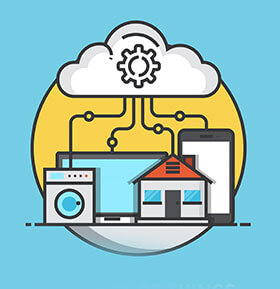You could have the most valuable GPT, digital course, or coaching program in the world.
But if you don’t know how to sell yourself first…
You’ll stay invisible.
“The most powerful product you’ll ever sell is you.” – from Confidence: How to Sell Yourself
At IMMachines.com, we talk a lot about systems, AI workflows, and automating your marketing. But there’s one internal system that’s even more important: your self-concept. Your ability to present yourself with clarity, conviction, and quiet power is what opens doors, wins clients, and builds trust faster than any sales funnel.
This post distils the key insights from the book Confidence: How to Sell Yourself into a creator’s guide for self-belief, personal branding, and persuasive presence—designed for solopreneurs 35+ who are building businesses around their life experience, skills, and message.
1. Why Selling Yourself Is the Real Business Strategy
Most creators think they’re selling:
-
A coaching package
-
A GPT tool
-
A lead magnet
-
A course
But behind all of that, the truth is:
You are always selling an identity—and that identity is yours.
People don’t just buy products. They buy into the confidence of the person offering them.
They ask themselves:
-
“Do I trust this person?”
-
“Do they believe in what they’re offering?”
-
“Can I feel their certainty in my bones?”
If the answer is yes, everything becomes easier—sales, referrals, retention, impact. This is the foundation of personal brand marketing: before your idea can win, you have to win the room.
That doesn’t mean fake bravado or over-the-top hype. It means authentic alignment—where your inner belief matches your outer message.
2. Confidence Is a Skill—Not a Trait
Many solopreneurs believe confidence is something you’re either born with or not.
False.
This book breaks the myth by reframing confidence as a skill set—something you can train and develop. Here’s how that applies to creators and consultants:
| Limiting Belief | Confident Shift |
|---|---|
| “I hate selling myself.” | “I love helping people make smart decisions.” |
| “I’m not a charismatic speaker.” | “I speak with calm clarity and value.” |
| “People don’t care what I offer.” | “The right people are waiting for what I share.” |
At IMMachines, many of our tools (like Thought-Leader Engine or Sales Angle Generator) are designed to systematize external expression—but you also need an inner operating system that runs on self-worth, vision, and conviction.
Confidence is built like muscle: through reps, not theory.
3. The Power of Presence: How You “Enter the Room” Matters
One of the most compelling ideas from the book is the concept of immediate perception—how people form an impression of you within seconds.
As a creator, this applies online too:
-
Your landing page
-
Your sales video
-
Your first tweet or email
-
Your brand voice and bio
Ask yourself:
“Am I showing up as the person I want them to trust, learn from, and invest in?”
Here are 3 high-impact upgrades from the book you can apply today:
💡 1. Improve Your Self-Intro
Don’t say: “I’m just starting a little coaching business.”
Do say: “I help midlife solopreneurs turn their expertise into automated digital income with AI systems.”
Clarity = confidence.
💡 2. Master Your Micro-expressions
People buy based on emotion and energy. Smile subtly. Sit upright. Speak with calm enthusiasm—not frantic energy.
This matters whether you’re on Zoom, in a Loom video, or recording for YouTube.
💡 3. Dress for Belief
Even in your home office, how you show up visually affects your mindset. Want to feel powerful before a client call? Put on the shirt you’d wear to a $10K keynote.
4. Stories Sell—But Your Story Sells Best
Everyone loves a good story—but too many creators hide behind information. This book reminds us that:
“The best message is one that’s lived.”
You don’t need a rags-to-riches origin to tell a powerful story. You just need a clear transformation that aligns with your audience’s desire.
At IMMachines, we often help clients craft their Signature Story for content and funnels. Here’s a simple formula from the book, updated for our solopreneur creators:
-
Struggle: What personal challenge or limiting belief did you face?
-
Search: What did you try that didn’t work? What did you learn?
-
Solution: What shift helped you finally break through?
-
System: How can others use what you’ve discovered?
Example for a GPT Creator:
“For years, I struggled to keep up with content marketing. It felt like a second full-time job. Then I built a GPT tool that automated my repurposing workflow. Now, I help others build the same systems—without burning out.”
This structure turns your life into a brand asset.
5. Sell the Outcome, Not the Offer
Confidence in sales isn’t about pitching harder. It’s about shifting the focus to what truly matters to your audience: results.
“Don’t sell your service—sell what your service unlocks.”
You’re not selling:
-
A content plan → you’re selling clarity, visibility, and traction
-
A GPT tool → you’re selling automation, time freedom, and lead flow
-
A coaching session → you’re selling confidence, decision-making, and breakthroughs
Here’s the transformation formula we use inside IMMachines:
[Input] → [System] → [Outcome]
Example:
“You bring your rough ideas. I bring the Content Repurposer Pro GPT. Together, we turn your insights into 30+ pieces of content that build trust and grow your audience.”
This kind of message feels confident, clear, and irresistible.
6. Handle Rejection with Power, Not Panic
No matter how well you sell yourself, you will face rejection.
The difference is how you frame it.
The book emphasizes that rejection isn’t about you—it’s about timing, fit, and perspective. Confident creators don’t crumble under “no.” They reinterpret it.
Here’s how you can reframe rejection in your solopreneur journey:
| Rejection Says | You Reframe |
|---|---|
| “It’s too expensive.” | “They don’t yet see the value. I’ll improve my positioning.” |
| “I’m not ready.” | “This isn’t about me. I’ll follow up when they are.” |
| “I need to think about it.” | “That’s a buying signal in disguise. I’ll schedule a check-in.” |
At IMMachines, we teach creators to build systems that absorb rejection. That means:
-
Automated follow-up
-
Warm re-engagement funnels
-
Repackaging offers for different avatars
Confidence isn’t about avoiding no. It’s about creating momentum anyway.
7. The 5 Confidence Builders for Solopreneurs
The book outlines a set of confidence-building habits that are especially useful for creators growing their personal brand:
1. Preparation
Don’t wing it. Whether it’s a sales call, podcast guest spot, or content sprint—prepare like a pro.
IMMachines Tip: Use our GPT tools to prep call scripts, offers, bios, and more.
2. Repetition
Want to sound confident on camera? Record daily—even if no one watches. Confidence comes from the doing.
3. Environment
Surround yourself with creators who are shipping, selling, and supporting. Your surroundings shape your story.
4. Language
Speak success into your work. Use affirmations like:
-
“I lead with clarity.”
-
“My tools deliver real results.”
-
“I am the right guide for my audience.”
5. Results
Track and celebrate wins—no matter how small. Confidence compounds when you recognize your progress.
8. Magnetic Messaging: Speak So People Listen
The book emphasizes three rules of influential communication that creators can use immediately:
✴ Clarity over Cleverness
Don’t try to sound smart. Try to sound clear. Speak your audience’s language, not yours.
Instead of:
“I help optimize AI-powered omnichannel communication workflows.”
Say:
“I help you create emails, blogs, and videos in minutes using AI.”
✴ Emotion before Logic
Lead with desire. What does your audience want—and how will life feel after they get it?
Don’t just explain the GPT. Explain how it solves what keeps them up at night.
✴ Speak in Benefits, Not Features
Instead of:
“This includes 5 frameworks and 100 prompts…”
Say:
“In 10 minutes, you’ll have a sales message that speaks directly to your dream client.”
Confidence is magnetic when your message meets people where they are.
9. Your Confidence Is the Shortcut to Trust
At IMMachines.com, we often hear this from solopreneurs:
“How do I get people to trust me faster?”
Here’s the hard truth: People don’t trust businesses. They trust humans.
Your potential clients need to feel:
-
That you believe in your own offer
-
That you’re calm, grounded, and congruent
-
That your energy matches your promise
Trust doesn’t come from testimonials or fancy pages (though those help). It comes from your inner state being aligned with your outer message.
When you believe in what you offer—deep in your bones—people feel it.
Confidence is the transmission of that belief.
Final Thoughts: You Are the Message
As a creator, coach, or consultant—your business is you.
Before the funnels, GPTs, and automations… people are buying into your story, your energy, and your conviction.
That’s why confidence isn’t just nice to have. It’s non-negotiable.
So take this as your daily reminder:
-
You don’t need to fake it.
-
You don’t need to be louder than life.
-
You just need to own your value, speak clearly, and keep showing up.
The world doesn’t need another clever sales page. It needs you, fully expressed, generously visible, and unapologetically ready to serve.
At IMMachines, we’ll help you build the systems. But the soul of your business?
That’s your confidence.
And it sells.






